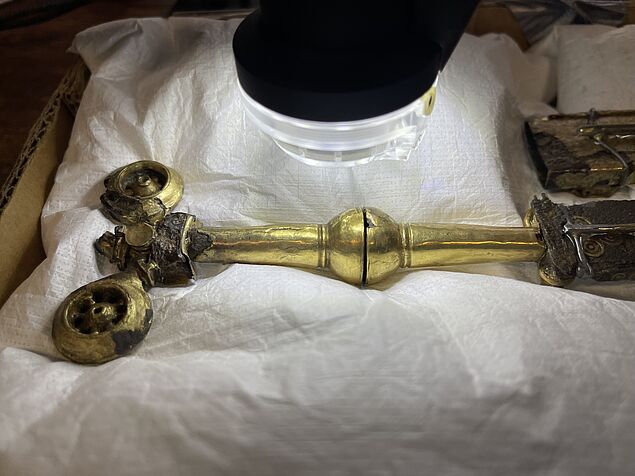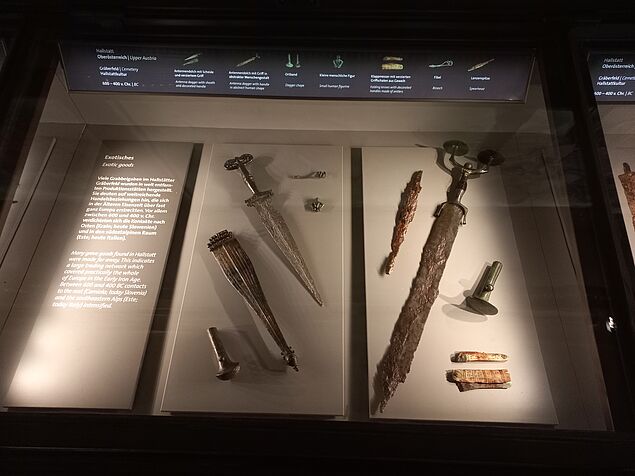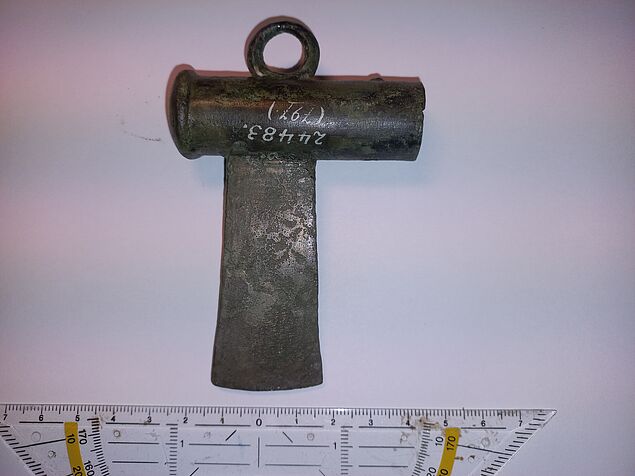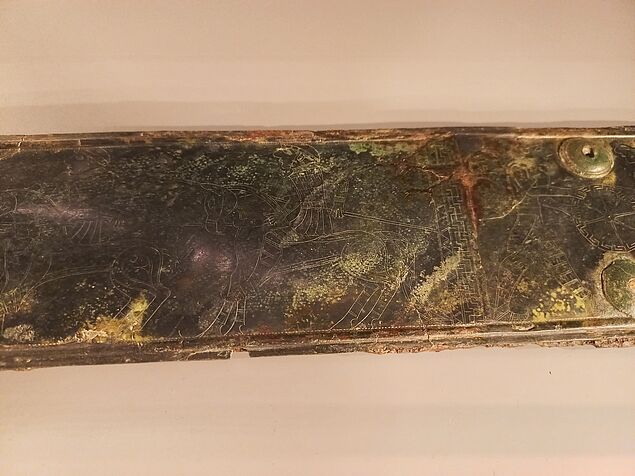Hallmetals-Archaeometallurgical analyses on metals from the famous Iron Age cemetery of Hallstatt, Austria PI: Dr. Ing. Mathias Mehofer, VIAS, University Vienna
funded by European Union-H2020-IPERION-HS (FIX_145)
.
The discovery of the famous cemetery of Hallstatt, Austria, with its rich and spectacular grave goods gave its name to an entire prehistoric culture – the Hallstatt culture (ca. 8th to the 4th cent. BC) – for which these grave finds are typical. The total number of excavated metal objects, coming from approx. 1500 burials, is currently estimated up to many thousand pieces. These objects, which are nowadays housed in the Naturhistorisches Museum Wien (NHM), represent a remarkable and, to date unexplored, (archaeometallurgical) pool to examine the wide-ranging exchange connections of the prehistoric salt miners.
Initiated in 2021, the project was granted in 2023. In cooperation with colleagues from the Department for Prehistory of the NHM, a set of 130 metals (gold and copper based objects) like swords, daggers or personal implements, covering the time span of the 8th to the 4th century BC, will be examined. Furthermore, LBA finds from Hallstatt and the surrounding regions are also analysed in order to investigate the exchange systems over a longer period of time. To this end, finds (finished products and ingots) from Upper Austria, Styria and Salzburg are analysed. Within this EU-H2020 project, the chemical composition will be analysed by energy dispersive X-ray fluorescence analyses (ED-XRF) and the stable lead isotope ratios of the copper metals by a Multicollector-Inductively Coupled Plasma Mass Spectrometry (MC-ICP-MS) at the Curt Engelhorn Centre of Archaeometry, Mannheim.
The generated archaeometallurgical database of the Hallstatt metals will allow for in-depth analyses of Iron Age metal exchange to the region over vast distances. This data will be evaluated and compared to previously published chemical data and lead isotope ratios of copper ores, ingots, and artefacts from the European region to examine the exchange systems of the copper.
A first survey of the analytical results show, that tin bronzes and raw copper are present. The element patterns indicate both, chalcopyrite-based and fahlore-dominated copper, which was used for the production of the artefacts. This in good accordance with previous research results, which describe a noticeable increase in fahlore dominated copper from Ha B onwards.
More information to follow….
Project partners:
- Mag. Dr. Georg Tiefengraber, Prehistory, Natural History Museum Vienna, A
- Priv.-Doz. Mag. Dr. Karina Grömer, Prehistory, Natural History Museum Vienna, A
- Mag. Daniel Oberndorfer, Prehistory, Natural History Museum Vienna, A
Link to the homepage of the department for prehistory, NHM Vienna, A
- Dr. J. Leskovar, OÖ Landesmuseum, OÖ Landes-Kultur GmbH, Linz, A
- Mag. D. Modl, Universalmuseum Joanneum, Graz, A
- Mag. Kira Schröter, Institut für Archäologische Wissenschaften, Ruhr Universität Bochum, D
- Univ.-Prof. Dr. Thomas Stöllner, Leiter Forschungsbereich Montanarchäologie, Deutsches Bergbau-Museum Bochum, D
- Prof. Dr. Ernst Pernicka, CEZA Mannheim, D
- Ing. M. Pointinger, Kammerhofmuseum Bad Aussee, Bad Aussee, A
- Prof. H. Potrebica, Department of Archaeology, University of Zagreb, CR
- Welterbemuseum Hallstatt, Hallstatt, A
Funding
Financial support by the access to research infrastructures activity in the Horizon 2020 Programme of the EU (IPERION HS Grant Agreement n.871034) is gratefully acknowledged




